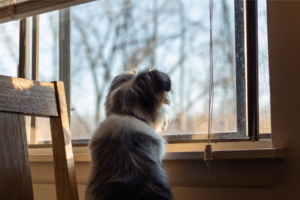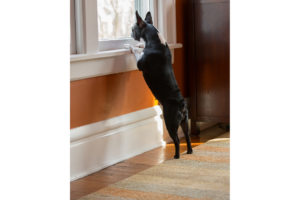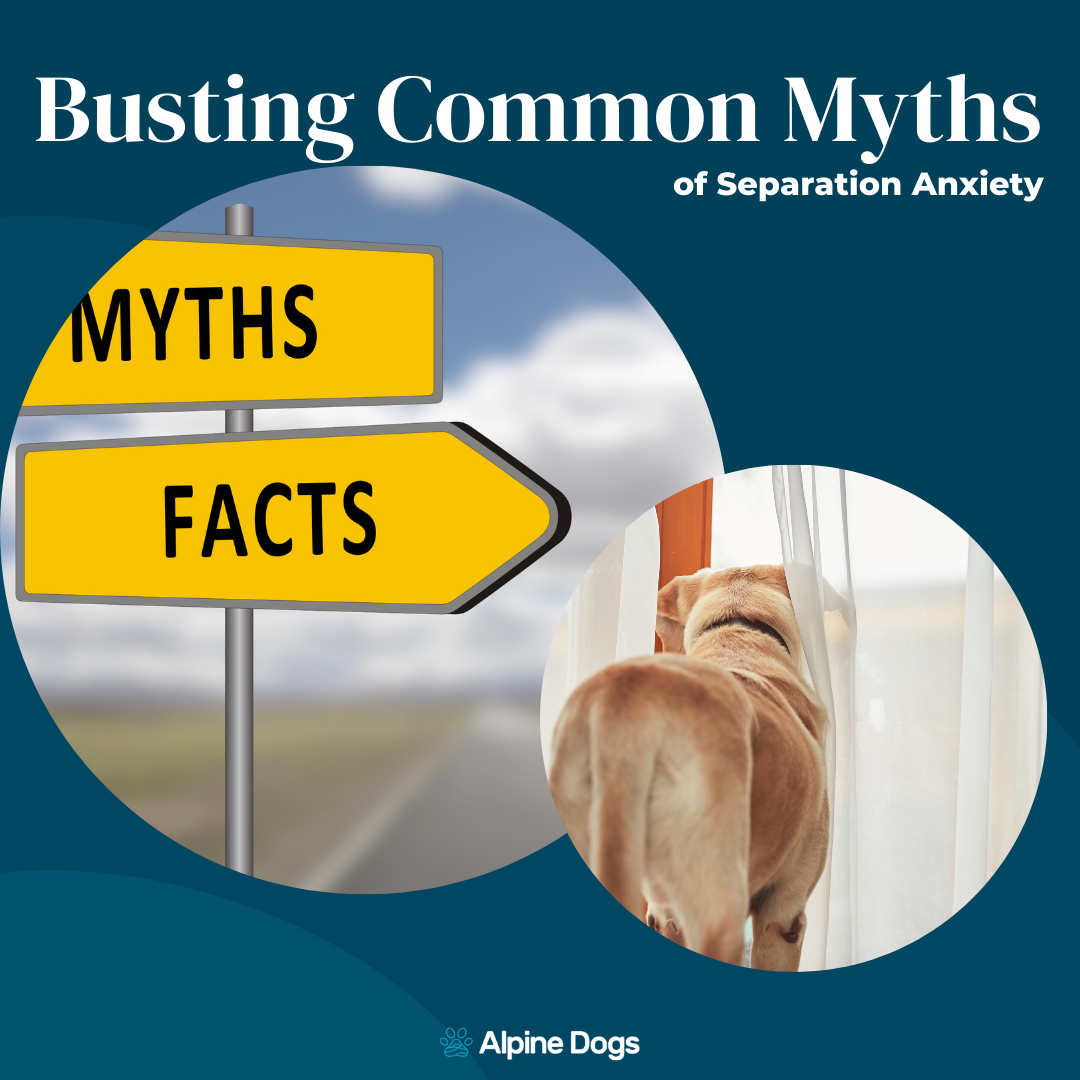Are you coming home to a mess everytime you leave your dog? Are they chewing at the doorframe and having accidents? Have your neighbours mentioned that they heard your dog barking and howling for hours?

Understanding Separation Anxiety
Separation anxiety is a panic disorder in dogs. There are different variations of separation anxiety in dogs, where certain scenarios can cause panic. Some dogs are hyper-attached to one individual, and anytime they are separated from that person, they panic. Some dogs do well as long as someone or anyone is with them. If they are alone, they panic.
What does separation anxiety look like?
There are some common signs that point to separation anxiety. This is by no means a complete list, and every dog is different but as my mentor, Julie Naismith says, these are the “BIG” signs of separation anxiety.
Vocalization
If your dog is whining, howling or barking for long periods of time when you are gone, they are panicking and struggling with being alone. Chances are someone that lives close by has mentioned they’ve heard your dog while you’ve been out. On top of the vocalization, other signs of distress can include frantic pacing, and physical symptoms like panting, trembling, shaking and drooling.
MYTH BUSTING FACT: Using a bark collar is NOT a humane solution. Why? Sure it stops the barking, but you need to address the reason for the barking and help your dog feel safe. Using an aversive like a bark collar will only increase your dog’s anxiety. Imagine being tasered for screaming when you’re panicked. Sounds awful right? Don’t do this to your dog.
Destructive Behaviour
Dogs that suffer from separation anxiety and really struggle when being left home alone can be destructive. This is generally focused around exit points in the home, and often can include self-harm. They are so worked up that they will injure themselves trying to get out to find you. These dogs may cause damage to walls, doors and flooring as they try to escape.
MYTH BUSTING FACT: Putting your dog in a crate is NOT the answer. Confinement can lead to more panic and your dog may seriously injure themselves. Most dogs that suffer from separation anxiety do worse when confined to a small space. Again, you need to address the reason for the destructive behaviour, and being free in the house is not the issue here. The issue is your dog is struggling to be alone.
Housetraining Accidents
If your dog is having accidents at home when left alone but is an otherwise fully housetrained dog, there is a high likelihood your dog suffers from separation anxiety. If you come home to accidents please don’t get mad at your dog. Just understand that they were in such a panic they lost control of their bowels and bladder. Trying to reprimand your dog for this is inhumane, and besides the only thing your dog will learn is that when you come home you’re mad. Don’t create more stress for your already panicked dog.
MYTH BUSTING FACT: Your dog is not having accidents out of spite or because they are willful. If you think your dog is doing it to get back at you because they are mad you left them at home, you’re very mistaken. Your dog is panicked to the point that they are losing control of their bowels and bladder. Have compassion for your dog.
Anxiety
Does your dog start to follow you around the house when you are getting ready to leave? Do they start to pace or whine or get really clingy? Dogs are masters at forming associations and can pick up on very subtle departure cues like brushing your teeth or putting your coffee in a to-go mug. The anxiety this panic disorder causes can start before you’ve even left the house.
MYTH BUSTING FACT: You did not cause this. If someone is telling you that your dog is acting like this because you let them sleep on your bed, or cuddle on the couch with you, or that you’re spoiling your dog and this is what happens, they are sorely mistaken. Worse yet, if they’ve taken your money under the guise of a dog trainer and are saying these things- run! Say it with me again- you did not cause your dog’s separation anxiety.
Find support for you and your dog
While these are some of the “BIG” signs of separation anxiety it is by no means an exhaustive list, and your dog may only display some of these common signs, not all of them. There are many other signs that can lead to a diagnosis of separation anxiety and as your dog’s human, you will know what distress looks like for your dog.
If you’re not sure what your dog does once you leave, but have a feeling they are not settled, try and video your dog while you are gone to see what is happening.
Think your dog may be struggling with being home alone? Or have you simply not left your dog home alone yet for worry of how it will go? Reach out to a certified professional for help.

Saundra Clow is a certified SA Pro that offers virtual separation anxiety training services. She is based in beautiful Pemberton, BC but is available to help no matter where you are located. You can schedule a FREE 15-minute discovery call with her to talk about your specific situation.
